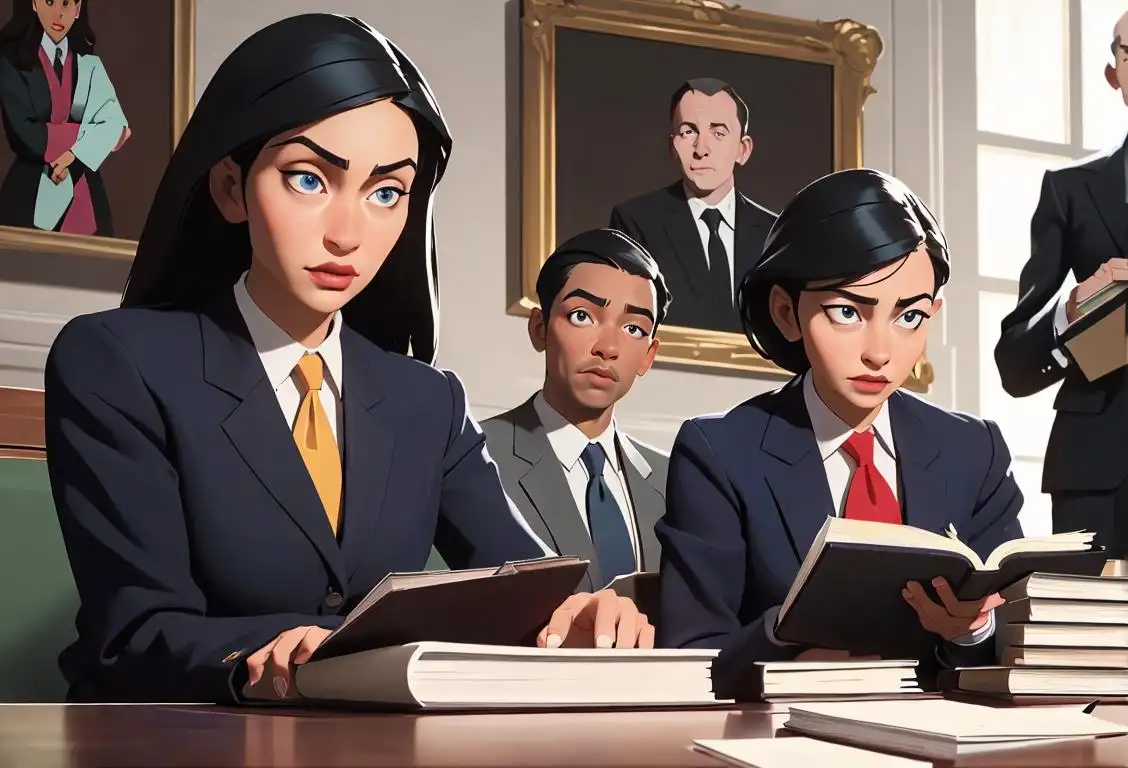National Limerick Day

Ah, National Limerick Day! A day where poets and non-poets alike can indulge in rhymed verse (often with a twist of humour). It's a chance to let loose your inner bard, and who knows? You might just find that you're a regular Edgar Allan Poe in the making. With mentions peaking on the 12th of May 2016, it's clear that this poetic day has captured the hearts, minds and iambs of folks all over the internet.
When is Limerick Day?
It's national limerick day on the 12th May.
A Brief History of National Limerick Day
Named after Limerick in Ireland, these five-line poems with a distinct rhythm have been bringing joy and laughter since the 18th century. National Limerick Day, as the name suggests, pays homage to these whimsical wonders of words, encapsulating a ritual of creativity and literary appreciation.
Limericks and the Internet Boom
As noted, the highest number of mentions we detected was an impressive 2973 on 12th May 2016. It seems that this five-line exercise in wit and wordplay has made an impressive leap onto the digital stage, earning the adoration of internet users. Online platforms like social media, blogs, and chat rooms become filled with clever and sometimes nonsensical rhyme schemes, showcasing the creative potential of words on this day.
Why We Love Limericks
Ahem, why wouldn't we? They're quintessentially quirky, intrinsically fun and perfect for a bit of casual creativity. Whether you're an aspiring Wordsworth, a diligent Dr. Seuss, or an absolute beginner, limericks offer something for everyone. Plus, they're short, making them the ideal choice for our increasingly short internet-spanned attention!
History behind the term 'Limerick'
14th century
Early Origins
The term 'limerick' is believed to have originated in the 14th century, although the exact details are uncertain. One theory suggests that the term may have been derived from the Irish city of Limerick, which was known for its humorous poetry and witty banter. Another possibility is that it evolved from a type of song or ballad popular in the region. Regardless of its precise origin, 'limerick' would go on to become synonymous with a particular type of amusing and often nonsensical verse.
19th century
Edward Lear's Contribution
The term 'limerick' gained widespread recognition and popularity in the 19th century thanks to the work of English writer and artist Edward Lear. Lear is credited with popularizing the limerick form and establishing its distinctive structure. His book 'A Book of Nonsense,' published in 1846, contained numerous limericks featuring quirky characters and absurd scenarios. Lear's limericks were characterized by their five-line structure, with the first, second, and fifth lines rhyming together and the third and fourth lines forming a separate rhyming couplet.
20th century
Limericks in Popular Culture
Throughout the 20th century, limericks became increasingly popular and were embraced by both writers and enthusiasts of humorous verse. They were often included in newspapers, magazines, and anthologies, contributing to their widespread recognition. Limericks also found their way into various forms of popular culture, such as comedy sketches, songs, and even advertisements. The accessibility and light-hearted nature of limericks made them a favored choice for those seeking to entertain and bring a smile to the faces of their audience.
Present Day
Continued Popularity
Today, limericks continue to be enjoyed and celebrated as a unique form of humorous poetry. They are frequently shared on social media, in greeting cards, and during special events such as National Limerick Day, which is celebrated annually on May 12th. Limericks have also become a common subject for competitions and challenges, inviting individuals to showcase their creativity and wit. The enduring popularity of limericks is a testament to their timeless appeal and ability to captivate audiences with their clever wordplay and hilarious punchlines.
Did you know?
Did you know, that the term 'Limerick' is believed to have originated from a pub song or chorus popular in Limerick, Ireland, and referred to as 'Will You Come Up to Limerick?'Tagged
fun community social media creativity poetry literary appreciationFirst identified
11th May 2015Most mentioned on
12th May 2016Total mentions
2973Other days
Limerick Day
Emoji Day
Boob Day
Philanthropy Day
Hug Your Cat Day
Law Day
Pabebewave Day
Cheese Pizza Day
Friend Day
Rum Day








